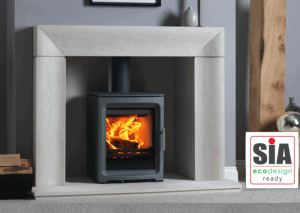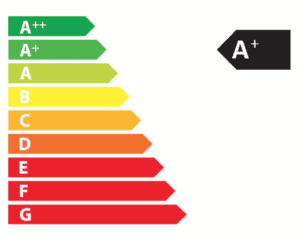 There has been so much media spotlight around air quality towards the end of 2017 and early 2018, especially with regards to solid fuel burning. With this in mind there probably has never been a better time to be considering replacing your old stove or fire with a modern, high efficiency replacement, such as those found in the Charlton & Jenrick range.
There has been so much media spotlight around air quality towards the end of 2017 and early 2018, especially with regards to solid fuel burning. With this in mind there probably has never been a better time to be considering replacing your old stove or fire with a modern, high efficiency replacement, such as those found in the Charlton & Jenrick range.
Only last week, following the Beast From The East snow storm, The Mayor of London said:
“During this cold weather, we want to ensure that air pollution caused by wood burning across the capital is kept to a minimum. The industry is already doing great work in developing less polluting ‘ready to burn’ wood and low-emission stoves, but increased effort needs to be made in raising awareness of these new designs, so Londoners have the information they need to make the right choice.
“That’s why I’m supporting this campaign, and the industry’s efforts, to clean up our filthy air. If you have to burn wood this winter, make sure you use the right fuel and the right kit– you can make a huge difference.” (read full article here)
Since this statement above, quoted from The Mayor of London, The Department for Environment, Food and Rural Affairs, has called for evidence on the UK’s use of solid fuels and the burning of wet wood for heating homes across the country. The objective of this is to further help control and tackle pollution and harmful emissions from burning solid fuel.
It has been claimed that replacing just one old inefficient stove with a low emission one, such are those found in the Charlton & Jenrick range, could be the equivalent of taking five old diesel trucks off the road!
The EU’s new Ecodesign standards, which are due to come into effect in 2022 state that new stoves must be at least 75% efficient. The legislation before was much lower, stipulating a 65% limit. These regulations are all to help towards a cleaner, greener environment.
These tough new rules highlight how inefficient old technology is. An open fire has an efficiency of only 25%! An old stove is not as inefficient as an open fire, but still is incredibly inefficient when compared to modern Ecodesign stoves of today.
Over 200,000 wood burning stoves are sold in the UK every year. They are desirable and a great style option for a home. Not only are they stylish, they have also been proven to help lower blood pressure and increase relaxation, according to the results of a research project by the University of Alabama.
Silent Killers?
There has been some bad and misleading press in the past about wood burning stoves, and the fact that they are “silent killers” – this is far from the truth with new high efficiency stoves. Smoke from burning wood does naturally contain a mixture of harmful gases, which have greatly been reduced with newer stoves. Furthermore the introduction of maximum carbon monoxide and NOx levels will come into force along side the 2022 legislation, all which will help contribute to the greener credentials of a modern wood burning stove.
 Eco-Labelling:
Eco-Labelling:
Since January 2018 all stoves need to be “eco-labelled“, which means there is no hiding behind the past fictitious “green” credentials. This labelling is similar to what we see with household appliances such as washing machines and dishwashers. This labelling is designed to give consumers a much clearer view of the efficiency and output of their stove.
How Consumers Will Benefit:
Clearer labelling with generally lower emissions across the board, will be two significant benefits of these new developments. Tests have already shown that an ecodesign stove, such as those found in the Purevision range, produce 90% fewer emissions than an open fire, and 83% less than a stove from 10 years ago – a huge leap forwards by any standard.
You can view our range of ecodesign ready stoves at https://www.charltonandjenrick.co.uk/brands/purevision/gallery/








